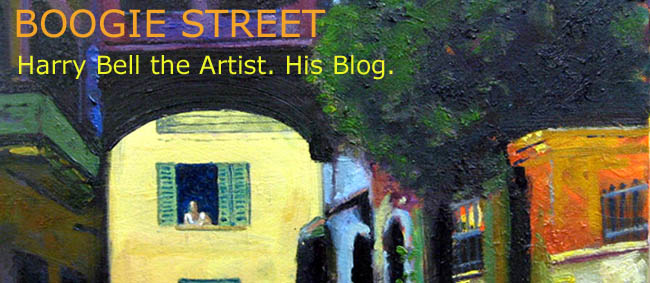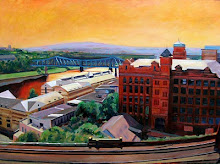 Korcula Town (Pilot disposable fountain pen, 2 pages of A5 sketchbook)
Korcula Town (Pilot disposable fountain pen, 2 pages of A5 sketchbook)What a fascinating place Croatia is. Or at least the bits we saw of it. Three nights in
Split turned out to be not enough. It's a lively urbane city, built around and incorporating
Diocletian's Palace. At times it reminded me of Venice, at others of Greece, and it was a pleasure to wander its little side streets and cafe-adorned squares, or sit out on the Riva and watch the world go by.
Despite Split's busy atmosphere, from our apartment we could easily reach the
Marjan peninsula and walk through its wooded park; it felt for all the world as if most of civilisation was a hundred miles away.
Before we left Split, we had time to visit the
Mestrovic Museum - a striking building filled with
Ivan Mestrovic's sculpture. I loved them: very Expressionist at times, but also showing influences from Pre-Classical to Michaelangelo.
From Split we took the (amazingly cheap) ferry to the island of
Korcula, and stayed in Korcula Town for seven nights. One of the great delights there was to find a terrific
Tintoretto in the Cathedral. Newly restored, it glows with the most astonishingly vivid colours.
We also found a small gallery run by the painter,
Hrvoje Lorenzo Kapelina. I loved his work and managed to get to meet and talk to him for a short while. A pleasant unassuming man, he told me he likes to do much of his painting during the Winter, so that he can "make the Summer last as long as possible." Eventually I bought one of his pictures - a rare event for me these days - and as Autumn claws its way across England, it's a real delight to be able to look at a little piece of Korculan Summer.
From Korcula, we took the ferry back to Split, then a bus to
Trogir. Trogir is a UNESCO World heritage site, a town of twisting alleyways, and buildings of infinite variety - Romanesque, Gothic, Renaissance and Baroque. And nearby are the Kastelas, an astonishingly quiet riviera based on seven small castles whee we spent two days walking in tranquility.
The drawing muse visited me only once, when I sat on the balcony at Korcula and drew the view. It's a bit of a wobbly drawing, but it'll do as a reminder of a wonderful holiday. On the bus to the airport, we met a woman who invited us to stay with her in
Pula, further north. She reminded us of the local 3rd C. relief depicting the Greek god of opportunity. You must grab him as he comes towards you, because the back of his head is shaved and after he's gone past, you'll find him very difficult to get hold of.

















